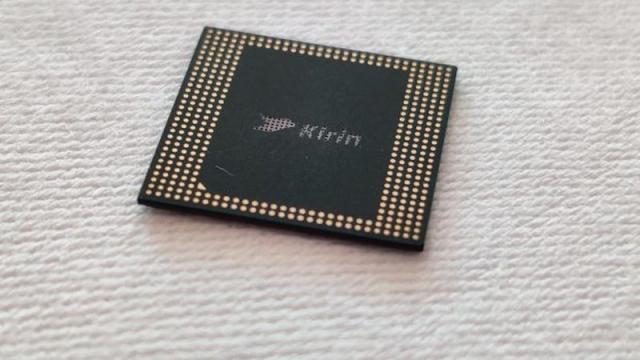Most tech companies won’t develop their own chips, instead opting for something built by Qualcomm, Intel, or the like. Most tech companies aren’t Huawei, and Huawei is all about building its own chips and using them to try and one-up everyone else. The newly-announced Kirin 990 is no exception.
Huawei has proudly proclaimed that this is the “world’s first” flagship 5G system on chip. Unlike other companies which have been using a 4G SoC and adding an extra 5G modem, Huawei has squeezed them both into the same chip – saving a little bit of space inside the phone in the process. It also happens to be 36% smaller than comparable Snapdragon and Exynos processors, according to Huawei’s stats. In fact, it’s 7nm, much like last year’s Kirin 980.
There is a 4G variant too, but with 5G being the big thing in the tech industry, that’s what Huawei was mainly focused. on.
So what does this mean? Lots of big fancy numbers, apparently, since the chip has 10.3 billion transistors inside, and offers 5G download speeds of up to 2.3Gbps. Upload is a bit slower, but at 1.25Gbps you can’t complain quite so much. That’s 19% faster than it was before apparently, and fast is always good. Except in when you’re in the bedroom, perhaps.
On top of this the Kirin 990 is able to offer faster speeds in areas that have weak 5G signal. It does that by utilising the 4G signal in tandem and boost the speed by 5.8 times. If you’re in an area with weak 4G signal as well then you’re probably screwed. Unless there’s 3G lying around still.
Paper clip for scale
In terms of AI the 990 is also designed to be more energy efficient than before (big surprise), but Huawei wouldn’t tell us how efficient it would be ahead of time. That said the efficiency comes from the use of Big and ‘tiny’ cores inside the chip. The big core is for the more powerful processes, while the tiny core uses the least possible amount of power and can improve energy consumption by 24 times.
Meanwhile the CPU has two big cores (2.86GHz clock speed), two middle cores (2.36GHz), and four little cores (1.95GHz). That makes it Huawei’s most powerful CPU yet, with a 10% increase in single-core performance and 9% increase in multi-core performance. The same goes for power efficiency, and the big cores have a 12% efficiency, the middle cores 35%, and the little cores 15%. Go Middle cores, I guess.
Graphically the 990 has a 16-core Mali-G76 GPU (up from 10 cores on the 980), which has a 6% increase in performance while also a 20% boost in power efficiency.
And finally we have some improvements the Kirin 990 offers the camera. The 990 has the first ‘dual-domain video noise reduction’ and uses block-matching and 3D filtering to offer what Huawei claims is DSLR-level noise reduction in its images.
And that’s the Kirin 990, which we should see rolling out to Huawei devices pretty soon – including the upcoming Mate 30 series.
